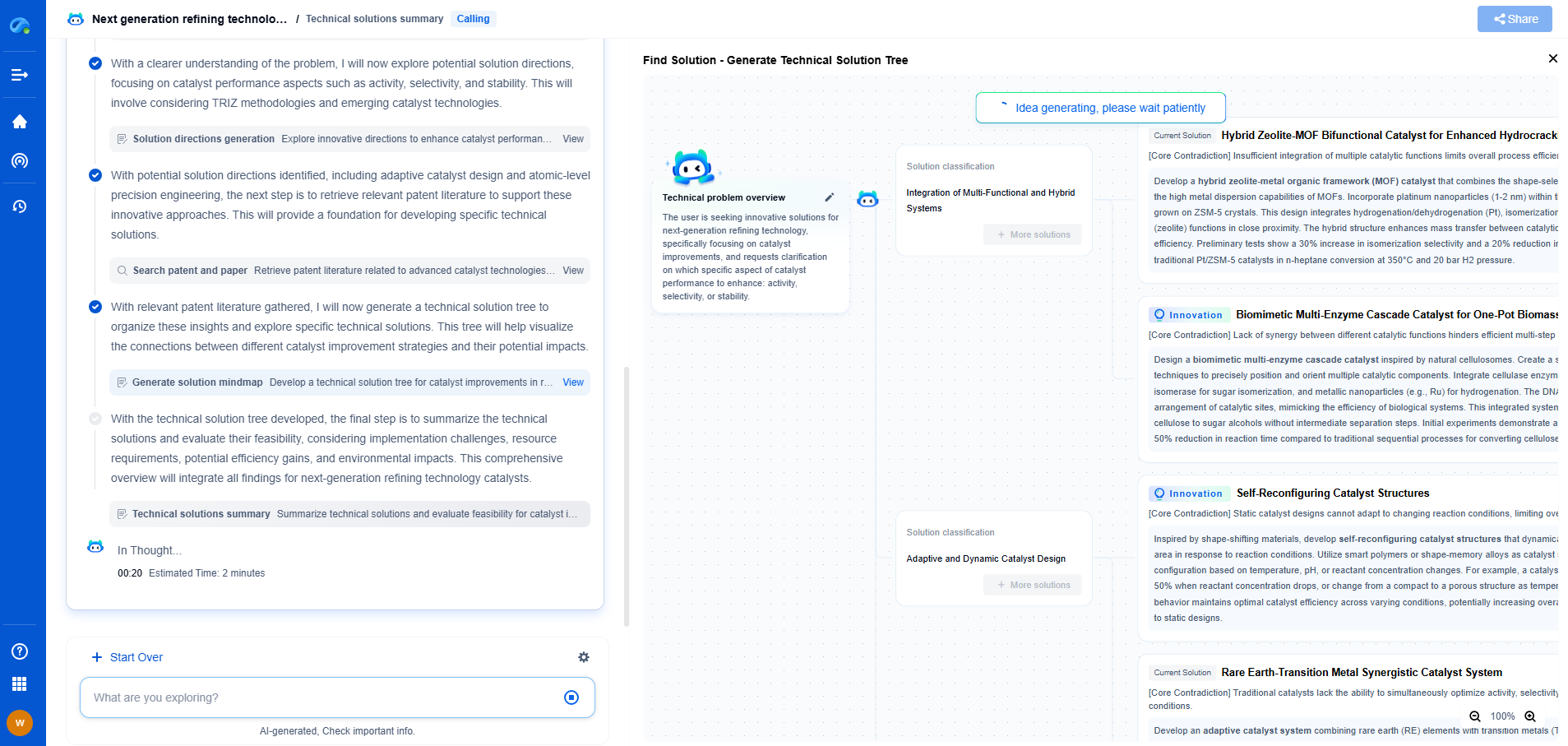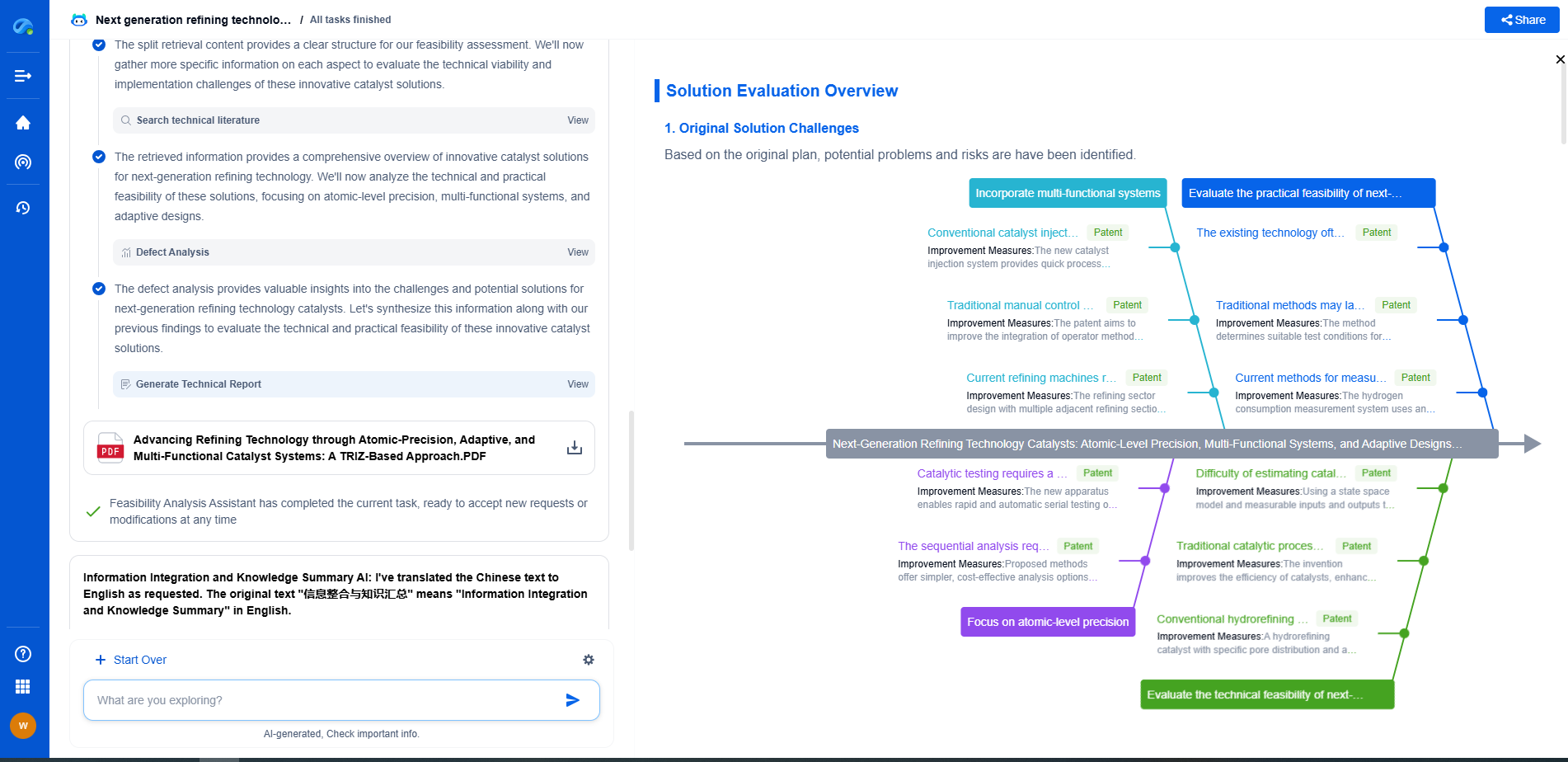Internal Resistance Measurement: AC Impedance vs. DC Pulse Methods Compared
JUN 20, 2025 |
Internal resistance is a critical parameter that determines the performance and efficiency of batteries and other electrochemical devices. Understanding the internal resistance can help in assessing the health, lifespan, and safety of batteries. Two prominent methods for measuring internal resistance are AC Impedance and DC Pulse. Each method has its own advantages and applications. In this article, we will delve into these two techniques, comparing their functionalities, benefits, and limitations.
Understanding AC Impedance Method
The AC Impedance method, often referred to as Electrochemical Impedance Spectroscopy (EIS), is a sophisticated technique used to measure the internal resistance by applying an alternating current (AC) signal. The frequency of the AC signal is varied over a range to obtain a comprehensive impedance spectrum. This method provides detailed information about the electrochemical processes within a battery.
Advantages:
1. **Comprehensive Analysis**: AC Impedance can dissect different components of internal resistance, such as charge transfer resistance, diffusion resistance, and double-layer capacitance.
2. **Non-destructive Testing**: It is a non-invasive technique that can be performed without causing any harm to the battery.
3. **Frequency Response**: By analyzing impedance over a range of frequencies, it provides insights into the dynamic behavior of the battery system.
Limitations:
1. **Complexity**: The method requires complex equipment and interpretation of the results demands expertise.
2. **Time-Consuming**: The testing process can be relatively slow, especially if a wide frequency range is covered.
3. **Cost**: The equipment and process can be expensive, making it less accessible for routine assessments.
Exploring DC Pulse Method
The DC Pulse method, also known as the pulse discharge method, involves applying a direct current (DC) pulse to the battery and measuring the resultant voltage drop. The internal resistance is then calculated using Ohm’s law. This method is widely used due to its straightforward approach and quick results.
Advantages:
1. **Simplicity**: The DC Pulse method is simple to execute, requiring minimal equipment and expertise.
2. **Quick Results**: It provides fast measurements, which is beneficial for routine checks and maintenance.
3. **Cost-Effective**: Generally more affordable compared to AC Impedance analysis.
Limitations:
1. **Limited Insight**: Unlike AC Impedance, the DC Pulse method does not differentiate between the various components of resistance.
2. **Potentially Invasive**: Repeated pulsing can cause stress to the battery, potentially affecting its lifespan.
3. **Accuracy**: The method might not be as precise, particularly for batteries with high impedance or complex chemistries.
Comparative Analysis
When choosing between AC Impedance and DC Pulse methods, several factors need to be considered:
- **Purpose of Measurement**: If a detailed analysis of the battery’s internal processes is required, AC Impedance is preferable. For quick, routine assessments, the DC Pulse method is more practical.
- **Available Resources**: The choice may also depend on the available equipment and expertise. Organizations with limited budgets might opt for the DC Pulse method due to its cost-effectiveness.
- **Battery Type and Application**: The type of battery and its application can influence the choice of method. For instance, high-precision applications may benefit more from the AC Impedance method.
Conclusion
Both AC Impedance and DC Pulse methods have their place in the measurement of internal resistance, each offering unique advantages and facing specific limitations. The decision between the two should be guided by the specific requirements of the application, the level of detail needed, and the resources available. Understanding these methods allows for better battery management, enhancing performance and extending the operational life of electrochemical systems.
Accelerate Breakthroughs in Fuel Cell and Battery Innovation—with the Power of AI
From solid-state battery breakthroughs to high-efficiency hydrogen fuel cells, keeping pace with fast-evolving chemistries, global patent landscapes, and emerging application pathways is an ever-growing challenge for R&D and IP professionals.
Patsnap Eureka, our intelligent AI assistant built for R&D professionals in high-tech sectors, empowers you with real-time expert-level analysis, technology roadmap exploration, and strategic mapping of core patents—all within a seamless, user-friendly interface.
Whether you're optimizing cathode formulations, evaluating electrolyte stability, or navigating the crowded patent space around battery pack design, Eureka empowers you to move faster and with greater confidence.
Start your journey with Patsnap Eureka today—streamline your research, enhance decision-making, and power the future of energy with AI-driven clarity.
- R&D
- Intellectual Property
- Life Sciences
- Materials
- Tech Scout
- Unparalleled Data Quality
- Higher Quality Content
- 60% Fewer Hallucinations
Browse by: Latest US Patents, China's latest patents, Technical Efficacy Thesaurus, Application Domain, Technology Topic, Popular Technical Reports.
© 2025 PatSnap. All rights reserved.Legal|Privacy policy|Modern Slavery Act Transparency Statement|Sitemap|About US| Contact US: help@patsnap.com

